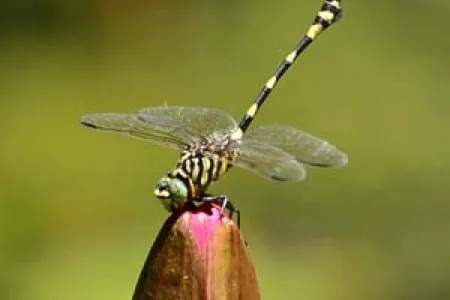NT icon gains its own ‘Identifly’ app
In an Australia first, a new app to help identify some of the Northern Territory’s most spectacular flying insects has gone live based on research by a Charles Darwin University dragonfly expert.
Aquatic ecologist and head of the School of Environment Professor Jenny Davis has been compiling information for a guide to the NT’s dragonfly and damselflies and will trial the guide as an app people can download from today (Monday, 6 February).
Professor Davis said Australia was home to more than 300 species of dragonflies, with the tropics providing the ideal conditions for many. She said that nearly one-third of all species recorded in Australia were found in Kakadu National Park, so it was an important area for dragonfly conservation.
“The NT boasts an amazing diversity of spectacular species such as the brightly coloured Scarlet Percher, which is often found perching on reeds near water, and the distinctive Graphic Flutterer, which – as the name suggests - can be seen fluttering in small flocks, often near the coast,” she said.
The “Identifly” app was created by Professor Davis’ son James Friend, who enjoyed dragonfly hunting as a child with his mum in Kakadu, and is now based in the United States working in digital media as a user interface engineer at Facebook.
“It has been a real family affair with James and his partner Dora Kojevnikov (a digital content manager) turning the original field guide into an app,” she said.
Professor Davis said that many dragonfly species could be identified by their size and colour, but there was considerable variation within a species, both between males and females, and with age.
“Often the males are more spectacular than the females in order to attract a mate,” she said.
“This technology means that people can now capture an image with their smart device and then zoom in to look more closely at colour and wing markings. They can then compare these with the images and descriptions provided on Identifly.”
With 53 species added to the guide so far, Professor Davis said the app would be updated as new information came to hand.
She said that although the app started with research on the dragonfly fauna of Kakadu National Park, it would be useful throughout the Top End, Northern and Central Australia, and the tropical regions of near Asian and Pacific countries. It will also look to fill in knowledge gaps regarding the natural history of the insects.
The free app is available on iOS and Android devices from the Apple App Store and Google Play Store.
